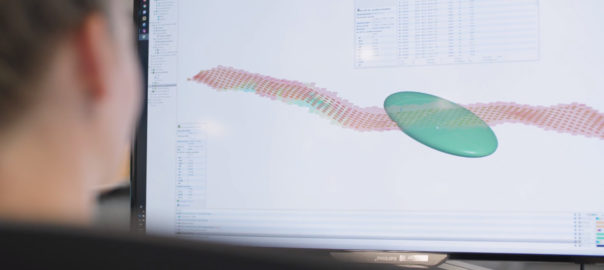Seequent says it has launched new releases for its mining solutions Leapfrog® Geo, resource modelling solution Leapfrog® Edge, model management solution Seequent Central and View.
Seequent’s General Manager – Mining and Minerals, Nick Fogarty, said: “Projects are becoming increasingly complex, and organisations are generating a huge amount of geological data to inform important investment and environmental decisions. Seequent’s mining solutions work in harmony to enable an unprecedented level of productivity and collaboration, giving customers’ insights that improve decision making and further reduce risk.”
Seequent Central’s importance as the nexus for managing geological data, across multiple projects and locations, has been recognised with major release upgrades including the Central Data Room bringing all data into one place, the company said.
Leapfrog® Geo 4.5, meanwhile, includes performance improvements designed to smooth day-to-day workflows for users, including informed uploading, simplified editing and exporting, redesigned file structures and intuitive polar nets, Seequent said.
Leapfrog Geo Product Manager, Byron Taylor, said: “Leapfrog Geo is our flagship solution well known for its stability and usability. For this release, we’ve delivered on many minor user requests that collectively add up to major enhancements. Leapfrog Geo is now well positioned to take on board some even more ground-breaking innovations that we have planned for the future.”
A major addition to Leapfrog Edge is the provision of a new Variable Orientation tool (pictured), which locally re-orientates the search and variogram, and features visual search ellipse validation, easy setup and updates, Sequent said.
“We’ve seen rapid industry uptake of Leapfrog Edge since its launch 18 months ago. This release further enhances Edge’s capability to deliver rapid dynamic resource estimates,” Mike Stewart, Seequent’s Technical Domain Expert, said.
Major advances for Seequent Central include a new intuitive web interface and Central Data Room that brings all critical project data into one place, according to the company. This allows teams to work together from a “single source of truth”, Seequent said. The Central Data Room allows data from a variety of sources to be uploaded, downloaded and version controlled within the Central Portal.
Seequent’s Central Product Manager, Peter Joynt, said: “Seequent Central is the best way to transfer Leapfrog projects to and from remote sites – its version control for geoscience data is a game changer. Before Central, companies were faced with the basic issue of trying to locate the latest version of a model. To further streamline projects, other types of data frequently used with Central can now be built into dynamic workflows, even if the outputs were generated in packages other than Leapfrog.”
View’s latest updates give teams, stakeholders and decision-makers more time-saving ways to collaborate and interact with their data in a browser to uncover insights, according to the company. The online tool allows all data and communications to be saved to the cloud.
“Users can more easily build a story, capturing an aspect of their 3D geological model and use the embedded note function to ask questions and allow stakeholders to give feedback all in one place,” Amy Gerber, View Product Manager for Seequent, said.








